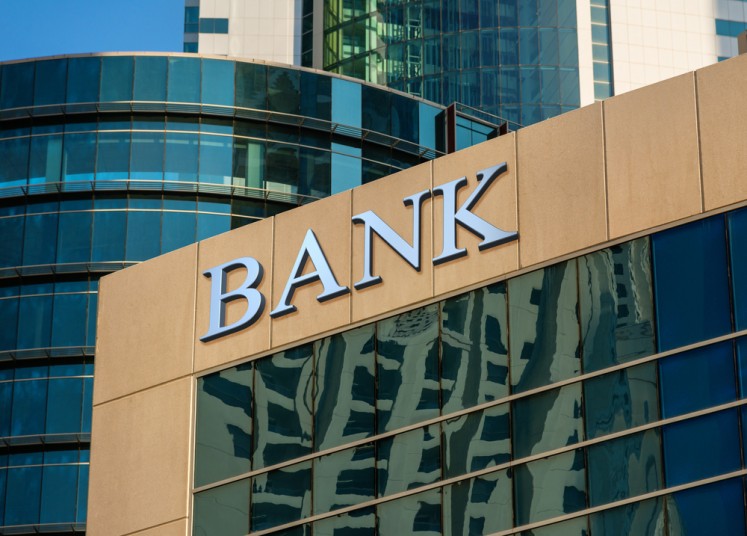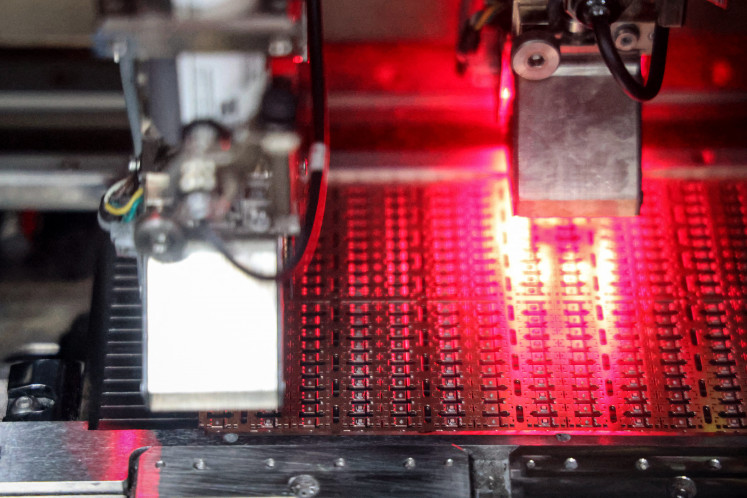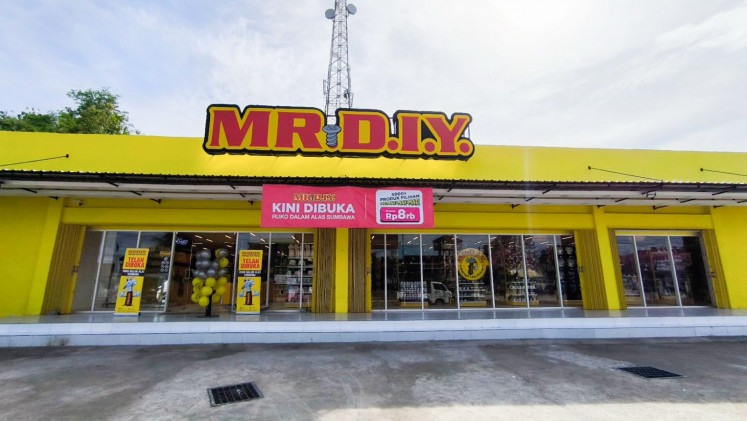Popular Reads
Top Results
Can't find what you're looking for?
View all search resultsPopular Reads
Top Results
Can't find what you're looking for?
View all search resultsUS stock futures tumble indicating another plummet on Wall Street
Investors had been anticipating another week of turbulence as global trading partners reacts to the harsher-than-expected tariffs. US S&P 500 E-minis stock futures were last down 4 percent. Dow E-minis were down 3.8 percent, while Nasdaq 100 E-minis were down 4.6 percent at the open on Sunday.
Change text size
Gift Premium Articles
to Anyone
 Traders work on the floor at the New York Stock Exchange (NYSE) in New York
City, the United States, on May 15, 2024,. Asian equities rallied on Thursday after US data showed
inflation cooled last month, fueling speculation that the Federal Reserve will cut interest rates
twice this year. The news sent all three main indexes on Wall Street to record highs, with
confidence given an extra boost by figures showing retail sales well below expectations,
suggesting consumers were taking a step back. (Reuters/Brendan McDermid)
Traders work on the floor at the New York Stock Exchange (NYSE) in New York
City, the United States, on May 15, 2024,. Asian equities rallied on Thursday after US data showed
inflation cooled last month, fueling speculation that the Federal Reserve will cut interest rates
twice this year. The news sent all three main indexes on Wall Street to record highs, with
confidence given an extra boost by figures showing retail sales well below expectations,
suggesting consumers were taking a step back. (Reuters/Brendan McDermid)
U
S stock futures opened sharply lower late on Sunday, suggesting a continuation of the two-day selloff that wiped trillions from equity values after the Trump administration's tariffs announcement last week.
Investors had been anticipating another week of turbulence as global trading partners reacts to the harsher-than-expected tariffs. US S&P 500 E-minis stock futures were last down 4 percent. Dow E-minis were down 3.8 percent, while Nasdaq 100 E-minis were down 4.6 percent at the open on Sunday.
In the two days following Trump's Wednesday tariff announcement, the benchmark S&P 500 index fell 10.5 percent and lost about $5 trillion in market value. It was the biggest two-day loss since March 2020. Thursday and Friday's steep slide put the S&P 500 down more than 17 percent from its February 19 all-time closing high, and brought it closer to bear market territory, which is typically defined as a 20 percent decline.
“The bull market is dead,” Mark Malek, chief investment officer at Siebert Financial, said ahead of futures opening. “We might see some gains in the next few days, but for now they’re not going to be sustainable.”
The timing of the tariffs news, which coincided with the beginning of the first-quarter earnings season, is contributing to the gloomy outlook, Malek said.
On Sunday morning talk shows, Trump's top economic advisers sought to portray the tariffs as a savvy repositioning. Treasury Secretary Scott Bessent said that there was "no reason" to anticipate a recession.
Some traders believe the stock market will at least attempt to stage a comeback of sorts.
“Sometime this week it’s probably inevitable that we will have an up day,” said Steve Sosnick, chief investment strategist at Interactive Brokers, ahead of futures opening.
The question remains about the sustainability of any rally.
“We may see a day this week where screens are green, but any lasting rally may not arrive for three or four weeks,” said Alex Morris, chief investment officer at F/m Investments. “At that point, people will start saying we’ve taken enough air out of the balloon.”










